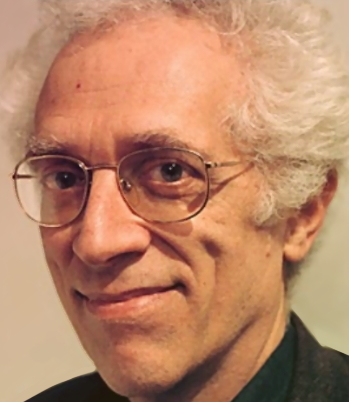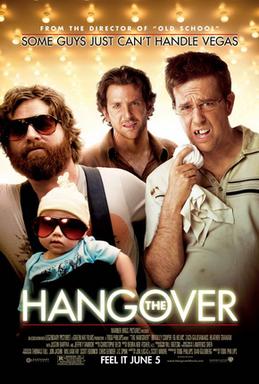 The British Board of Film Classification (BBFC) was orignally established in 1912 as an independant body, which previewed films before release to classify them with a certificate which allowed audiences to see what films were suitable for who. Before the BBFC it was the local authorities who had the responsibilty of classifying films and when the BBFC was introduced they accepted the change and followed the decisions made by them however under the licensing act of 2003 local authorites still have the power to overrule the BBFC's decisions and are legally responsible for what is shown in cinemas. In 1985 after the 1984 Recordings Act the BBFC became the statutory authority for classifying films.
The British Board of Film Classification (BBFC) was orignally established in 1912 as an independant body, which previewed films before release to classify them with a certificate which allowed audiences to see what films were suitable for who. Before the BBFC it was the local authorities who had the responsibilty of classifying films and when the BBFC was introduced they accepted the change and followed the decisions made by them however under the licensing act of 2003 local authorites still have the power to overrule the BBFC's decisions and are legally responsible for what is shown in cinemas. In 1985 after the 1984 Recordings Act the BBFC became the statutory authority for classifying films.Here are the main issues that the BBFC look for when they are classifying a film:
Drugs
• No work taken as a whole may promote the misuse of drugs and any detailed portrayal of drug misuse likely to promote or glamorise the activity may be cut. Works which show drug misuse while emphasising the dangers may receive less restrictive classifications than works that present drug misuse in a neutral manner. Where smoking, alcohol abuse or substance misuse feature to a significant extent in works which appeal to children, this will normally be indicated in the Consumer Advice and/or Extended Classification Information.
Drugs
• No work taken as a whole may promote the misuse of drugs and any detailed portrayal of drug misuse likely to promote or glamorise the activity may be cut. Works which show drug misuse while emphasising the dangers may receive less restrictive classifications than works that present drug misuse in a neutral manner. Where smoking, alcohol abuse or substance misuse feature to a significant extent in works which appeal to children, this will normally be indicated in the Consumer Advice and/or Extended Classification Information.
Language
• Many people are offended, some of them deeply, by bad language. This may include the use of expletives with a sexual, religious or racial association, offensive language about minority groups and commonly understood rude gestures. The extent of that offence may vary according to age, gender, race, background, beliefs and expectations brought by viewers to the work, as well as the context in which the word, expression or gesture is used.
• For these reasons, it is impossible to set out comprehensive lists of words, expressions or gestures which are acceptable at each category. The advice at different classification levels, therefore, provides general guidance taking account of the views expressed in public consultation exercises.
• Many people are offended, some of them deeply, by bad language. This may include the use of expletives with a sexual, religious or racial association, offensive language about minority groups and commonly understood rude gestures. The extent of that offence may vary according to age, gender, race, background, beliefs and expectations brought by viewers to the work, as well as the context in which the word, expression or gesture is used.
• For these reasons, it is impossible to set out comprehensive lists of words, expressions or gestures which are acceptable at each category. The advice at different classification levels, therefore, provides general guidance taking account of the views expressed in public consultation exercises.
Sex
• The portrayal of sexual activity can range from kissing and verbal references to ‘making love’, to detail of real sex. This is reflected in the classification system, in which progressively stronger portrayals are allowed as the categories rise.
• Sex works (works whose primary purpose is sexual arousal or stimulation) are likely to be passed only in the adult categories. Sex works containing only material which may be simulated are generally passed ‘18’. Sex works containing clear images of real sex, strong fetish material, sexually explicit animated images, or other very strong sexual images will be confined to the ‘R18’ category. ‘R18’ video works may be supplied only in licensed sex shops which no one under 18 may enter.
• ‘R18’ films may be shown only in specially licensed cinemas.
• These Guidelines will be applied to the same standard regardless of sexual orientation.
• The portrayal of sexual activity can range from kissing and verbal references to ‘making love’, to detail of real sex. This is reflected in the classification system, in which progressively stronger portrayals are allowed as the categories rise.
• Sex works (works whose primary purpose is sexual arousal or stimulation) are likely to be passed only in the adult categories. Sex works containing only material which may be simulated are generally passed ‘18’. Sex works containing clear images of real sex, strong fetish material, sexually explicit animated images, or other very strong sexual images will be confined to the ‘R18’ category. ‘R18’ video works may be supplied only in licensed sex shops which no one under 18 may enter.
• ‘R18’ films may be shown only in specially licensed cinemas.
• These Guidelines will be applied to the same standard regardless of sexual orientation.
Violence
• Violence has always been a feature of entertainment for children and adults. Classification decisions will take account of the degree and nature of any violence in a work.
• Works which feature the following are likely to receive more restrictive classifications: portrayal of violence as a normal solution to problems, heroes who inflict pain and injury, callousness towards victims, the encouragement of aggressive attitudes, and content which depicts characters taking pleasure in pain or humiliation.
• Sexualised violence or works which glorify or glamorise violence will receive a more restrictive classification and may even be cut.
• A strict policy on sexual violence and rape is applied. Content which might eroticise or endorse sexual violence may require cuts at any classification level. This is more likely with video works than film because of the potential for replaying scenes out of context. Any association of sex with non-consensual restraint, pain or humiliation may be cut.
• Violence has always been a feature of entertainment for children and adults. Classification decisions will take account of the degree and nature of any violence in a work.
• Works which feature the following are likely to receive more restrictive classifications: portrayal of violence as a normal solution to problems, heroes who inflict pain and injury, callousness towards victims, the encouragement of aggressive attitudes, and content which depicts characters taking pleasure in pain or humiliation.
• Sexualised violence or works which glorify or glamorise violence will receive a more restrictive classification and may even be cut.
• A strict policy on sexual violence and rape is applied. Content which might eroticise or endorse sexual violence may require cuts at any classification level. This is more likely with video works than film because of the potential for replaying scenes out of context. Any association of sex with non-consensual restraint, pain or humiliation may be cut.
Taken from the BBCF website – http://www.bbfc.co.uk/classification/guidelines/main-issues
Taken from the BBFC Guidelines
After reading through all of the guidelines that the BBFC give on how they classify their films I believe that my short film would be classified as a PG. My film includes no discrimination, drugs, horror, imitable behaviour, bad language, nudity, sex, or violence. The theme is also not enough to qualify a 12 yet still I believe enough to qualify for a PG. This is because although my film is harmless to all viewers it is not a film that I would let a young child watch wihout an adult.
However it is highly probable that a U could be the classification of my short film. It is impossible to be one hundred percent sure as I do not know what the BBFC would decide. It can be seen that my video is completely harmless (inlcuding nothing in the guidelines that could be harmful) to all viewers and is universally suitable, in which case it would be classified a U.
Having completed this research into the BBFC it is now a lot easier for me to have a clear idea what ceriticate my film will be. From this research i have learnt that fi I want my film to be classified as a PG which I do there are certain areas which I have to be careful on such as drugs use. These guidelines will make sure that I stick within them for my film, although with my current film idea there are not many worries with this.










.jpg)




